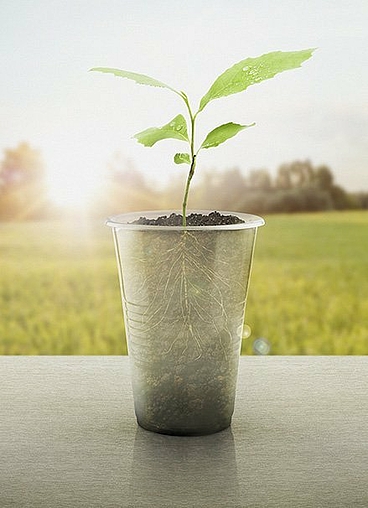our rPET
product line
Foodgrade and flexiblity without compromise. viscotec's decontamination technology exceeds highest food grade standards like EFSA and FDA.

Not being aware of all these aspects attests lack of environmental performance and bears the risk of environmental incidents. It is therefore one central part of environmental management systems (e.g. acc. to EMAS, ISO 14001) to identify the significant environmental aspects of the company’s activities.
Though, analyzing these aspects is not restricted to certified companies. Each PET sheet producer is well advised to check his interaction with the environment. A detailed examination of this topic certainly reveals ecologic and economic potentials. Once identified as significant aspect, concrete objectives can be defined and measures for improvement can be taken.
For all sheet producers the raw material consumption is probably one of the most important aspects. A switch from A-PET to rPET would affect the environmental performance positively as it leads to a number of advantages:
European manufacturers often buy the virgin PET in Asia. A truck transporting 20 tons of PET material produces 91 kg of CO2 in 100 km. On the contrary, European food contact legislation requires that post-consumer bottles are of European origin (or it has to be proven that they are manufactured in accordance with EU legislation). Replacing virgin by rPET is therefore directly connected to considerably shorter transport distances and much less transport emissions. Assuming that the virgin PET is transported 5000 km from Asia to Europe and post-consumer material 500 km within Europe, 88 % less transport emissions are produced.
For the production of rPET bottles only 50 % of the energy is consumed that would be necessary for PET bottles out of virgin material. As there is no pelletizing necessary, the energy savings in rPET sheet production are even higher. US organization Napcor states that using post-consumer material for packaging like trays leads to 84 % energy savings compared to the use of virgin PET.
Through an increased use of rPET the volume of PET bottles that end up in incineration plants is reduced. A packaging made of 100 % rPET material leads to a reduction of the CO2 footprint by 50 %. Using 2000 tons of post-consumer material instead of thermal utilization saves 3000 tons of CO2.
Less A-PET production leads to less raw oil consumption and to a reduction of the greenhouse gases. For the production of 1 kg virgin PET 2 kg raw oil is used. Replacing 2000 tons of virgin PET per year by rPET saves 4000 tons of raw oil.
Substituting A-PET by rPET considerably improves your environmental performance. Do good and talk about it!